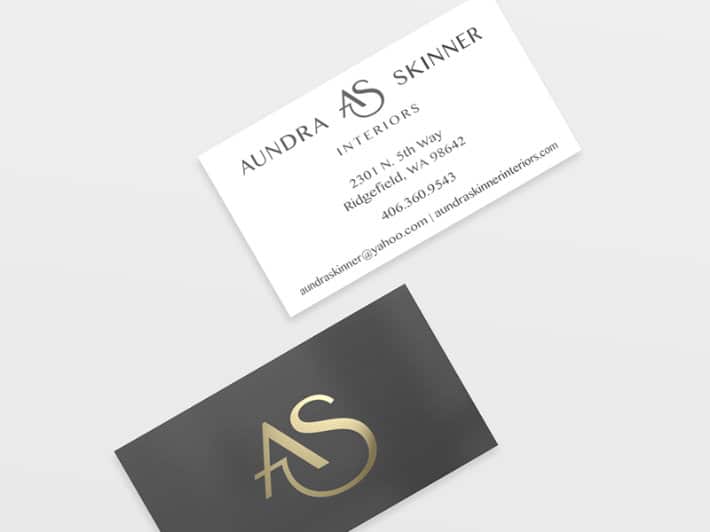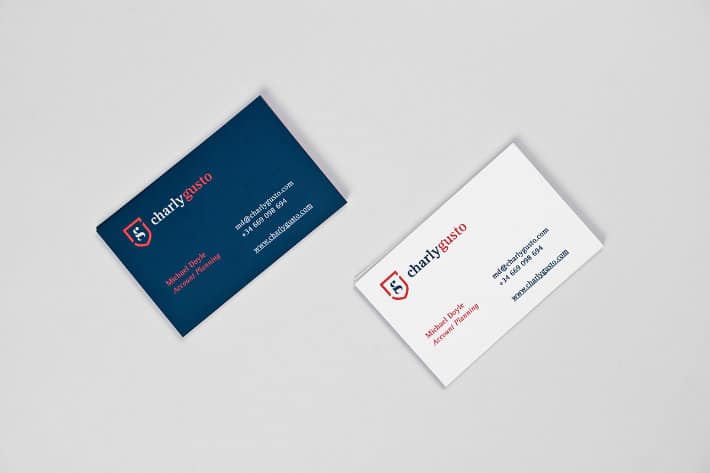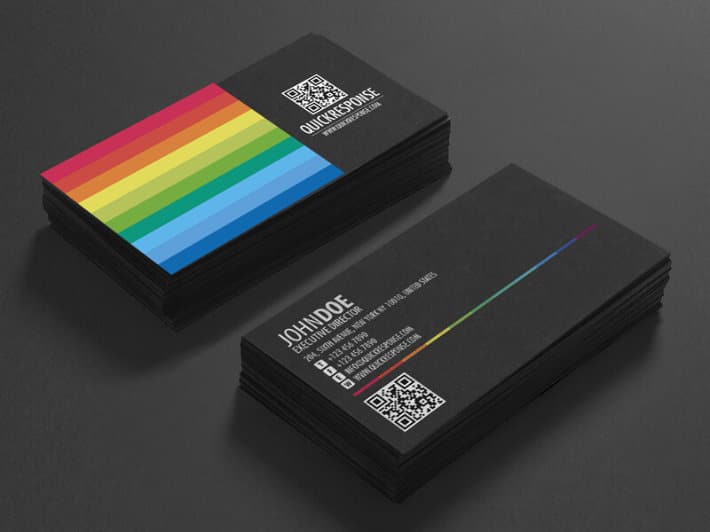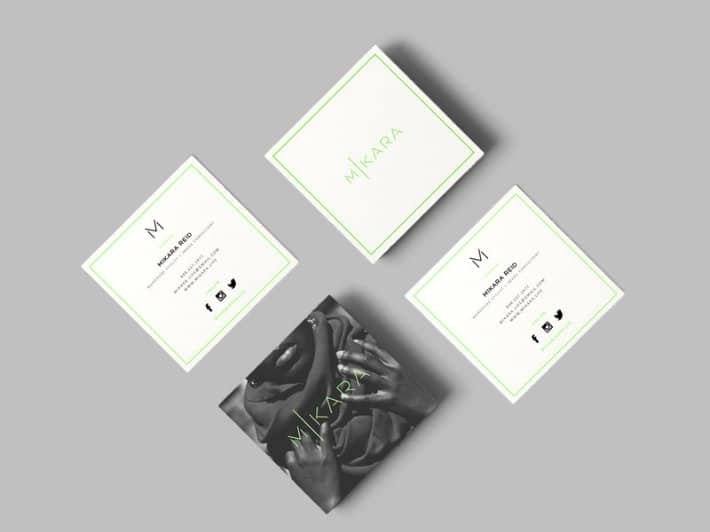How to Design Business Cards That Actually Stand Out
A well-designed business card offers authenticity to your business. It also makes you easily stand out from the rest of your competitors.
Business cards are necessary for any business, whether you’re a freelancer, an entrepreneur, or an owner of a multinational company. They are one of the best ways to ascertain new contacts at networking events and to subtly present your brand. Business cards may be small, but if they’re done right, they pack a punch that can win new business connections.
Basic Rules for Creating a Business Card
Business cards start with a blank canvas. You get to decide what kind of design and style you’d want for your (and your team’s) cards. But while the design process can be freestyle, there are a few basic rules that need to be followed.
1. Work With Great Design Principles

A business card is a piece of printed material. Because of this, the basics of paper-based design apply to the process of card-making as well:
- Make sure all your key copy is a minimum of 5mm from the trim edge.
- Use 300dpi for the best image reproduction.
- Maintain a minimum size for the typography to sustain legibility.
- Design in CMYK unless you’re working specifically with spot colors.
Most designers also find it helpful to work with a grid to lay out the cards. This process helps in achieving the right pecking order of details in addition to ensuring that the alignment is right.
2. Bring in Artistry Within the Constraints

There are a few ‘standard’ sizes for business cards, depending on what industry you’re a part of. One general example is the 55x85mm size.
While business cards are tiny compared to other printed marketing materials, you can still exercise your creativity with that small space. Start with the key details you want to include – the name of the company, your name, your job title, your contact info – then create your design by showcasing the information in an artistic manner.
3. Steer Clear of Common Pitfalls
There are a few typical issues in designing business cards that you must know about. The most obvious is to make sure you supply a bleed suited for the printer. This is typically 3mm, but it can also be 5mm. It’s also important to avoid a clear-cut border on the entire card, as this will highlight any misalignment in the trim if the card is cut imperfectly.
4. Recheck Your Artwork
This rule is applicable to every printed material you use. When delivering your artwork off to the print shop, be certain that you have double-checked every single detail. There’s nothing more frustrating than receiving your printed cards and finding out you overlooked a typo on your contact information. Check twice or thrice: this rule will save you time, money, and a headache.
Tips and Tricks for Creating Unique Business Cards

Your business card is usually a prospective client’s first connection with your company. One of the main objectives of the card is to engage them. The cards encourage them to learn more about you and what you do. Follow these tips and tricks to create unique and professional business cards that deliver!
The Crucial Information
It may seem obvious, but the first – and most important – aspects to consider when creating your business card are the pieces of information you need to convey. Ensure that your name, job title, and company name (or logo) are clearly showcased.
Choose which contact information to add – you have to strike a balance between giving sufficient points of contact without making the card look messy. The standard contact details include the company’s website, your (or your company’s) email address, and a phone number. Most businesses no longer feature their address on the business cards, so if you’re having problems with space, you can remove this from the design.
Readable and Understandable

If you have several pieces of information to show, you might be inclined to reduce the size of your text. Be mindful – small text may look understandable on-screen, but become an unreadable smudge when printed. The rule of thumb for this one: never go smaller than 8pt. Likewise, don’t overlook the font itself. Make sure to keep it professional and uncluttered. When choosing fonts, remove unprofessional looking or detailed calligraphic fonts from the list.
Color Scheme
It’s smart to keep the business cards in line with the company’s branding. If your company has specific colors, make use of them. Otherwise, you can have free reign over the color choices for the cards. However, make sure you choose complementary colors as clashing shades can look unattractive and unprofessional. If in doubt, work with an online color matching app, such as…….
QR Code

One way of saving space is to make a QR Code for your business card. This code provides a professional way of adding vital details on the card, without turning it into a mess. It’s also a good way to establish a link between your printed and online material. By scanning the QR code, people will automatically be directed to your website. There are tons of free QR code generators online, so getting “techy” need not hurt your wallet.
Visual Content
Images are more noticeable than words, and this holds true for business cards. While you must have written content somewhere on the card, consider saving some space for something more visual. Maybe you can use the space to show a picture of your product, or anything relevant to your business.
You can also put your company logo at the back of the card. Whatever you decide, don’t just leave it blank. It’s normally claimed that people don’t look at the back of the card, but that’s not always true. Just think about the times you have received a card and flipped it over to check what’s at the back.
Play with Colors, or Not

Vibrant colors – when used properly – can create a business card that stands out. This strategy is usually used by businesses in the design and creative industries, with the objective of appearing contemporary, fascinating, and original. Nonetheless, don’t undervalue the power of simplicity. An obvious black and white design can be as striking and unforgettable as a colorful card – and can wind up being more “fashionable,” too.
Borders and Bleeds
Avoid using borders on your business card. No matter how much attention is given, printing is rarely 100% exact. A flawlessly symmetrical border on your screen may appear uneven due to minute movements in the printing machine. Also, printers opt to leave a 3mm Bleed – a space the same color as the background – across the edges of the card, solely for this reason.
The Safe Area
Printing machines usually designate a “safe area” in the middle of the card. Keep any essential info – such as contact information – in this particular area to prevent it from being cut off during the printing process.
Embossed Details

If you’re worried about a black and white card looking flat, try embossing the details. Embossing produces a raised, 3D effect that brings style and elegance to the card. It also helps make the business card more responsive. Studies have shown that appealing to more than just one sense at a time can boost the recall of an object, so people could very likely remember your business.
Paper Thickness
The quality of the paper used to print the business cards is very important. Thicker cards often feel more high-end, making the business look more professional. A card printed on a paper thinner than 300gsm is usually tacky or cheap looking. Think about your business card as your handshake. No one likes a limp handshake, so why would people be impressed with a lifeless business card?
Simplicity

BwT business cards by Alberto Romanos
You may be tempted to work with an uncommon material for your business card. Although this will definitely be unique, remember the functionality of your chosen medium. People normally jot down extra information on business cards – like where they got the card. This is trickier to do with metal or wood.
Optimizing Your Business Cards
Even with the prevalence of social media and online networking websites, chances are you still have a stack of business cards with you during a networking event. In a world where Facebook and LinkedIn have dominated marketing tools and strategies, why does the paper card survive?
Business cards are more than just printed marketing material. When you meet people at a business conference, it’s essential that you make a good impression, express who you are and what you do, and why all of those things can be relevant to others. You have to stand out, and nothing has yet equaled the straightforwardness of handing over a business card.
Business cards have a one of a kind potential for personalized connections that can generate leads. Here’s how to optimize your business cards.
Add Relevant Social Materials.

Because most businesses consider social media as a means to tell their story and interact with customers, it’s wise to showcase your main social media accounts on your card. Provide interested new connections a chance to see what you can offer by directing them to the social networks related to your business.
Drop the Kitchen-Sink Tactic
While you may be inclined to present a huge selection of contact options (office, cell, and fax number; business address; e-mail; Facebook; Twitter; Pinterest ID; LinkedIn URL), a much better approach is to edit ruthlessly. Ask this to yourself: Where do you truly interact with prospects? Where can they get the most sense of your company?
Bypass Your Homepage
This can look counterintuitive, but if you think about it, it’s really not. Perhaps your homepage isn’t the best place to start off a conversation. Your company may be better served by pointing new prospects and tire-kickers to your company blog, an active landing page with a free download, or a resource page that’s informative and entertaining. Most homepages are a fire-hose blast of company details, but a blog or page-focused content can present a more achievable taste of something satisfying.
Stay Visual

A basic logo is a “yawner.” Use photos or graphics that ignite interaction and connection. There are design websites that enable you to put a different picture on each card, sourced from uploads or via Facebook. Display your products, your services, your team, or even BTS shots of how you produce your work.
Encourage Interest
Don’t just post your contact information and be done with it. Instead, encourage others to interact with you. For example: “Call me at (phone number) or send me an email at (email address) if you want to know the latest in this industry.”
Connect Your Online and Offline Worlds
A business card can serve as a bridge between your in-person and online presence. Add your social networking sites or put a QR code to easily direct people to your website or homepage. Just make sure you’re delivering an optimal experience to all.
Add a Call to Action
Look at creating small print runs of personalized cards designed for specific events, promotions or markets. Maybe for a trade event, share cards with a special show-specific offer. At a cocktail affair, give away cards that invite partygoers to check and tag their photos during that event at a specific social media page.
Produce Utility
If it’s in line with your industry, design a business card that provides other uses. For instance, design a card that acts like a mini-brochure or catalog. Some business cards are designed to mimic a mini spiral-bound notepad. These designs are more than pretty to look at, they’re downright useful, too.
Never underestimate the value of a well-designed business card. It can take your business places and get you the connection your company needs. Also, if you’re designing new business cards for your company, you can repurpose your old ones. Recycling is eco-friendly and can let you express your imagination and creativity in new, exciting ways.












